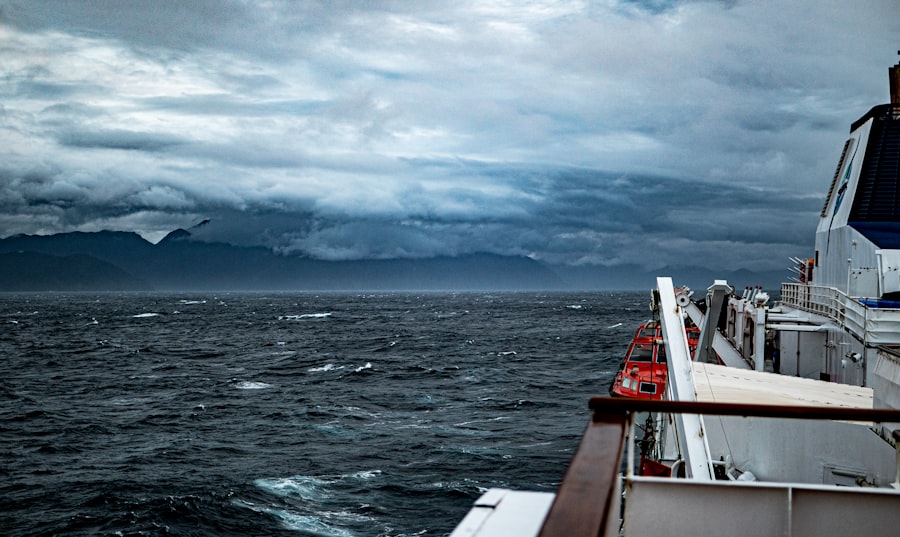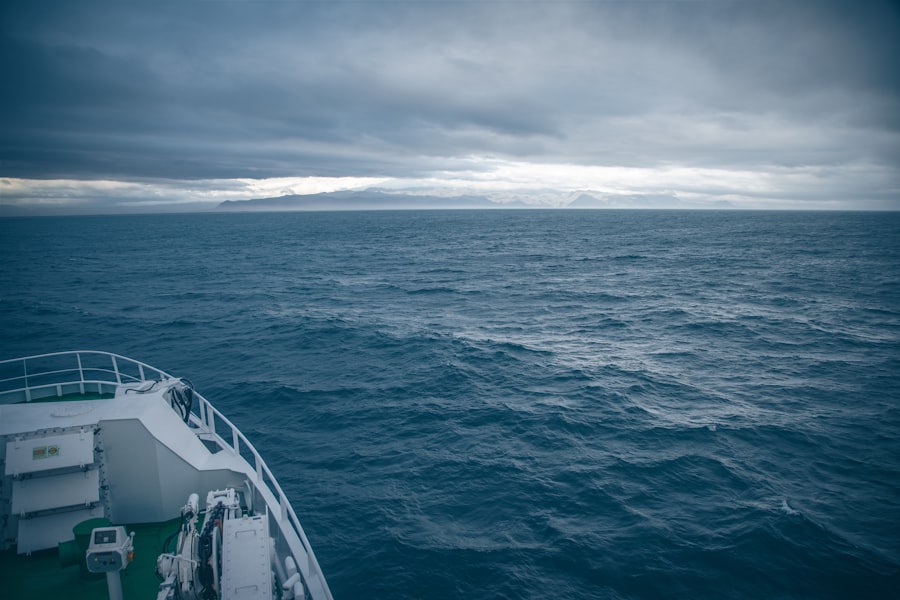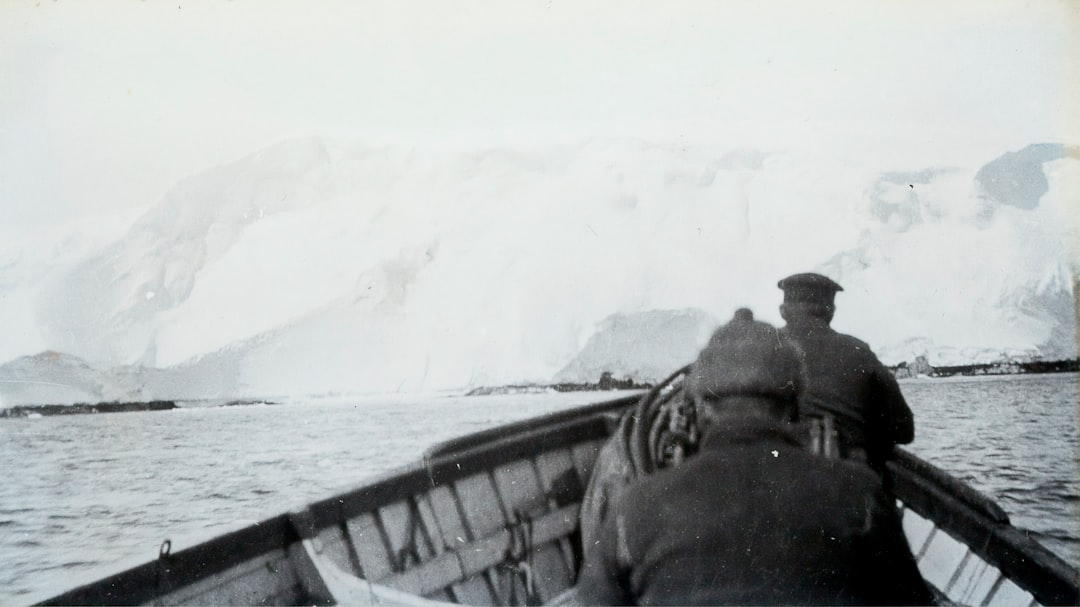The Drake Passage, a body of water situated between the southern tip of South America and Antarctica, is renowned for its tumultuous seas and unpredictable weather.
Named after the English explorer Sir Francis Drake, who navigated these waters in the late 16th century, the Drake Passage has become synonymous with adventure and exploration.
Its strategic location not only connects the Atlantic and Pacific Oceans but also plays a vital role in global oceanic currents, influencing climate patterns far beyond its immediate vicinity. The passage is characterized by its deep waters and strong currents, which can create challenging conditions for even the most seasoned mariners. The convergence of the Antarctic Circumpolar Current with the warmer waters of the Atlantic and Pacific Oceans results in a unique marine environment that is both rich in biodiversity and fraught with peril.
For many travelers, crossing the Drake Passage is not merely a means to reach Antarctica; it is an experience that tests their resilience and fortitude against nature’s raw power. The allure of this journey lies in its unpredictability, as each crossing can present a different set of challenges and rewards.
Key Takeaways
- The Drake Passage is a body of water between South America’s Cape Horn and the South Shetland Islands of Antarctica, known for its rough seas and strong winds.
- Preparing for a journey through the Drake Passage requires careful planning, including packing appropriate clothing and gear for the unpredictable weather conditions.
- Navigational challenges in the Drake Passage include icebergs, strong currents, and the potential for extreme weather, requiring skilled and experienced captains and crew.
- Weather and sea conditions in the Drake Passage can be highly variable, with the potential for rough seas, high winds, and rapidly changing conditions.
- The Drake Passage is home to diverse wildlife and natural beauty, including penguins, whales, and stunning landscapes, making it a popular destination for nature enthusiasts and photographers.
Preparing for the Journey
Preparation for a journey across the Drake Passage requires careful planning and consideration. Travelers must equip themselves with appropriate gear to withstand the harsh conditions that can arise during the crossing. Layering clothing is essential, as temperatures can fluctuate dramatically, and wind chill can make it feel even colder.
Waterproof outer layers, thermal undergarments, and sturdy footwear are crucial components of any traveler’s wardrobe. Additionally, packing seasickness medication is advisable, as many individuals experience discomfort during the passage due to its notorious waves. Beyond physical preparation, mental readiness is equally important.
Travelers should familiarize themselves with the potential challenges they may face during the crossing. Understanding the nature of the Drake Passage can help mitigate anxiety and foster a sense of adventure. Engaging with fellow travelers and sharing experiences can also enhance the journey, creating a sense of camaraderie among those braving the elements together.
Ultimately, thorough preparation can transform what might be a daunting experience into an exhilarating adventure.
Navigational Challenges

Navigating the Drake Passage presents a unique set of challenges that require skill and expertise. The unpredictable nature of the waters demands that captains remain vigilant and adaptable. Strong currents, shifting winds, and sudden storms can all impact a vessel’s course, making precise navigation essential.
Experienced mariners often rely on advanced technology, such as GPS and radar systems, to chart their path through these treacherous waters. However, even with modern tools at their disposal, there remains an element of unpredictability that keeps navigators on their toes. In addition to natural obstacles, the presence of icebergs poses another significant navigational challenge in the Drake Passage.
As vessels approach Antarctica, they must be cautious of drifting ice that can appear suddenly and without warning. Icebergs can vary greatly in size and shape, making it imperative for captains to maintain a safe distance while still ensuring they stay on course. The combination of these factors makes navigating the Drake Passage a complex endeavor that requires both technical skill and an intimate understanding of the sea.
Weather and Sea Conditions
| Location | Temperature (°C) | Wind Speed (km/h) | Humidity (%) | Sea Conditions |
|---|---|---|---|---|
| Beach A | 25 | 15 | 70 | Calms |
| Beach B | 22 | 20 | 75 | Light Chop |
| Beach C | 28 | 10 | 65 | Smooth |
The weather conditions in the Drake Passage are notoriously volatile, contributing to its reputation as one of the most challenging maritime routes in the world. Storms can develop rapidly, bringing with them high winds and towering waves that can reach heights of up to 30 feet or more. These conditions can create a rollercoaster effect on vessels, leading to discomfort for passengers and crew alike.
Understanding these weather patterns is crucial for anyone planning to traverse this passage. The best time to cross the Drake Passage is typically during the austral summer months, from November to March, when conditions are generally milder. However, even during this period, travelers should be prepared for sudden changes in weather.
The passage’s proximity to Antarctica means that cold fronts can sweep through unexpectedly, bringing rain or snow even in summer months. As such, travelers must remain flexible in their plans and be ready to adapt to whatever Mother Nature has in store.
Wildlife and Natural Beauty
Despite its challenging conditions, the Drake Passage is home to an astonishing array of wildlife and breathtaking natural beauty. The nutrient-rich waters support a diverse ecosystem that attracts various marine species, including whales, seals, and seabirds. Travelers crossing the passage often have the opportunity to spot majestic humpback whales breaching the surface or playful dolphins riding the bow waves of their vessel.
The sight of these magnificent creatures against the backdrop of rugged coastlines and icy landscapes creates an unforgettable experience. In addition to marine life, the surrounding scenery is nothing short of spectacular. Towering icebergs glisten in shades of blue and white under the Antarctic sun, while dramatic mountain ranges rise sharply from the sea.
The stark contrast between the icy waters and the vibrant colors of wildlife creates a visual feast for those fortunate enough to witness it firsthand. For many travelers, this natural beauty serves as a reminder of the planet’s raw power and fragility, inspiring a deep appreciation for the environment.
Safety Measures

Safety is paramount when traversing the Drake Passage, given its unpredictable nature and potential hazards. Vessels operating in these waters are equipped with advanced safety features designed to protect passengers and crew alike. Life jackets are standard equipment on board, and emergency drills are conducted regularly to ensure everyone knows what to do in case of an emergency.
Additionally, many operators provide comprehensive safety briefings before departure to familiarize travelers with protocols and procedures. In addition to onboard safety measures, travelers are encouraged to take personal precautions as well. Staying informed about weather conditions and heeding crew advice can significantly enhance safety during the crossing.
It is also wise for passengers to remain aware of their surroundings and report any concerns to crew members promptly. By prioritizing safety and remaining vigilant, travelers can enjoy their journey across the Drake Passage with greater peace of mind.
Historical Significance
The historical significance of the Drake Passage cannot be overstated. It has long been a vital route for explorers seeking to uncover the mysteries of Antarctica and beyond. Sir Francis Drake’s expedition in 1578 marked one of the first recorded crossings of this treacherous waterway, paving the way for future explorers who would follow in his footsteps.
Over the centuries, countless adventurers have braved its waters in pursuit of knowledge, trade, or simply the thrill of exploration. In more recent history, the Drake Passage has played a crucial role in scientific research and environmental studies related to climate change and marine ecosystems. Researchers often use this route to access Antarctica for field studies, contributing valuable data that informs global understanding of ecological shifts.
The passage’s rich history serves as a testament to humanity’s enduring spirit of exploration and curiosity about our planet’s most remote regions.
Tips for a Smooth Passage
To ensure a smooth passage across the Drake Passage, travelers should consider several practical tips that can enhance their experience. First and foremost, it is essential to remain flexible with travel plans due to potential weather-related delays or changes in itinerary. Being adaptable allows travelers to embrace unexpected adventures rather than becoming frustrated by unforeseen circumstances.
Additionally, engaging with crew members can provide valuable insights into navigating the passage effectively.
Finally, maintaining a positive attitude throughout the journey can significantly impact one’s overall experience; embracing the adventure rather than fearing it can lead to unforgettable memories.
Popular Activities and Excursions
Travelers crossing the Drake Passage often have access to a variety of activities and excursions designed to enhance their experience in this remarkable region. Many operators offer guided tours that allow passengers to explore nearby islands or participate in wildlife watching excursions. Kayaking among icebergs or taking small boat trips to observe seals basking on rocky shores are popular options that provide unique perspectives on this stunning landscape.
For those interested in photography or simply soaking in breathtaking views, many vessels feature observation decks where passengers can enjoy panoramic vistas while keeping an eye out for wildlife. Educational lectures led by onboard experts also enrich the experience by providing context about the region’s ecology, history, and conservation efforts. These activities not only enhance travelers’ understanding but also foster a deeper connection with this extraordinary environment.
Famous Expeditions and Explorers
Throughout history, numerous famous expeditions have traversed the Drake Passage, each contributing to humanity’s understanding of this remote region. One notable figure is Ernest Shackleton, whose ill-fated Endurance expedition in 1914 sought to cross Antarctica via this challenging route. Although Shackleton’s journey was fraught with peril and ultimately ended in disaster, his remarkable leadership during adversity has become legendary.
Another prominent explorer associated with the Drake Passage is Robert Falcon Scott, who led expeditions aimed at reaching the South Pole in the early 20th century. Scott’s journeys were marked by both triumphs and tragedies as he navigated these treacherous waters en route to his ambitious goals. The stories of these explorers continue to inspire modern adventurers who seek their own paths through this historic passage.
The Future of Drake Passage Travel
As interest in Antarctic travel continues to grow, so too does awareness regarding environmental conservation efforts within this fragile ecosystem. The future of travel across the Drake Passage will likely involve increased emphasis on sustainable practices aimed at minimizing human impact on marine life and habitats. Operators are beginning to adopt eco-friendly technologies and practices that prioritize environmental stewardship while still providing unforgettable experiences for travelers.
Moreover, advancements in navigation technology may enhance safety measures while allowing for more efficient routes through these challenging waters. As explorers continue to seek out new adventures in this remarkable region, it is essential that they do so with respect for both its natural beauty and historical significance. By fostering a culture of responsible travel within this unique environment, future generations will be able to experience all that the Drake Passage has to offer while preserving its wonders for years to come.
The Drake Passage is notorious for its treacherous waters, making it one of the most dangerous sea routes in the world. This perilous stretch of ocean, located between the southern tip of South America and Antarctica, is infamous for its unpredictable weather, strong currents, and massive waves. These conditions are primarily due to the confluence of the Atlantic, Pacific, and Southern Oceans, which creates a unique and volatile maritime environment. For more insights into the challenges and dangers of navigating the Drake Passage, you can read a related article on MyGeoQuest.
WATCH NOW! Drake Passage: Earth’s Deadliest Waters Revealed
FAQs
What is the Drake Passage?
The Drake Passage is the body of water between the southern tip of South America and the northern tip of the Antarctic Peninsula. It connects the Atlantic and Pacific Oceans.
Why is the Drake Passage so dangerous?
The Drake Passage is known for its rough seas and strong winds, making it one of the most treacherous stretches of water in the world. The convergence of the Atlantic, Pacific, and Southern Oceans creates intense weather patterns, including powerful storms and high waves.
What are the weather conditions like in the Drake Passage?
The weather in the Drake Passage is characterized by strong winds, frequent storms, and rough seas. The area is notorious for its unpredictable and rapidly changing weather, which can create hazardous conditions for ships and other vessels.
Are there any other factors that contribute to the danger of the Drake Passage?
In addition to the challenging weather conditions, the Drake Passage is also known for its strong currents and icebergs, which pose additional risks to navigation.
How do people navigate the Drake Passage?
Ships and other vessels that traverse the Drake Passage must carefully plan their routes to avoid the worst of the weather and sea conditions. Experienced captains and crew members are essential for safely navigating this treacherous stretch of water.
